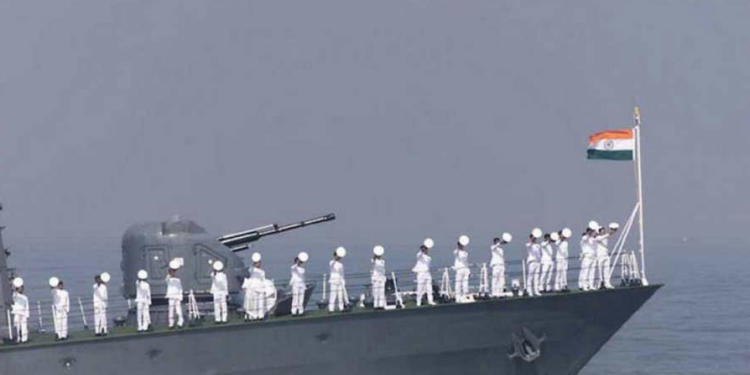In what clearly shows that Pakistan had been humbled after the Balakot airstrikes conducted by the IAF in the month of February this year and probably feared a naval confrontation, it has been reported that India had hunted for a Pakistani submarine for 21 days. After the Pulwama terror attack in which a suicide bomber attacked a CRPF convoy, the Indian Navy had pulled out from an exercise and had deployed a major chunk of its assets close to the Pakistani territorial waters. These assets included conventional and nuclear submarines.
As per latest reports, India was keeping a close eye on the movements of Pakistan military but as per a government source after the Indian Air Force bombed terror training camps in Balakot, Pakistan, one of the most advanced Pakistani Agosta-class submarines-PNS Saad, had reportedly vanished from the Pakistani waters. The Indian Navy had reportedly swung into action as it accounted for all other Pakistani Navy assets except the PNS Saad fitted with Air Independent Propulsion (a system that allows a submarine to remain underwater for a longer period than ordinary submarines). As per the government source, “The location near Karachi, Pakistan, from where the PNS Saad vanished, it could reach the Gujarat coast in three days and the headquarters of the western fleet in Mumbai within five days and was seen as a major threat to the security of the country.”
Anti-submarine warships and aircraft were also positioned by the Indian Navy in order to help it in the search of the Pakistani submarine. Sources have added, “All the areas where it could have gone in the given timeframe, extensive searches were carried out by the Indian Navy. P-8Is were pressed into service to locate the submarine along with the coastal areas of Gujarat followed by Maharashtra and other states.” As per sources, all necessary steps were taken by India in order to ensure that even if the Pakistani submarine had managed to sneak into the Indian territorial waters, appropriate action was to be taken and compel it to rise to the surface.
The Indian Navy had also persisted with an aggressive posture against Pakistan. INS Chakra, a Nuclear Submarine of the Indian Navy, was deployed along the Pakistani waters and instructed to keep looking for PNS Saad. Scorpene-Class submarine INS Kalvari, the latest induction in the Indian Navy was also positioned in an aggressive posture along the Pakistani borders in order to deter Pakistan Navy from indulging in any misadventure.
As the Indian Navy kept expanding the area of its search, it became clear that Pakistan had hidden the submarine somewhere else. After 21 days of hunting, it was finally traced down on the western side of Pakistan. It was probably hidden there in order to preserve a covert capability in case tensions spiked further between the two countries and there was a violent naval confrontation.
It is, therefore, clear that Pakistan had developed cold feet in face of Indian Navy’s aggressive posturing after heightened tensions between the two countries. Indian Navy spokesperson Captain DK Sharma had said at that time, “The overwhelming superiority of the Indian Navy in all three dimensions forced the Pakistan Navy to remain deployed close to the Makran coast and not venture out in the open ocean.” With the latest reports, it has also become clear that Pakistan was living in the constant fear of strong naval action from India’s side. India having deployed 60 warships compared to Pakistan Navy’s poor capabilities, this event has strongly established India’s naval superiority and dominance over Pakistan’s Navy.































